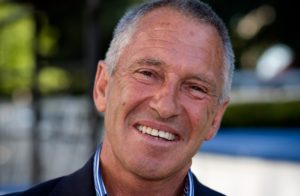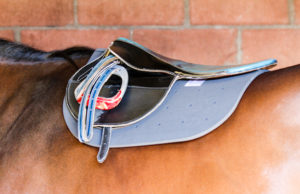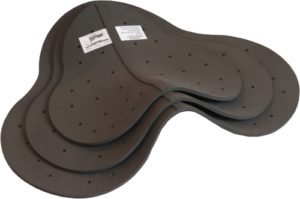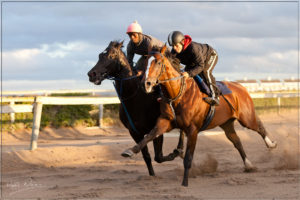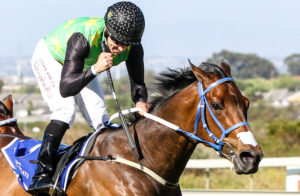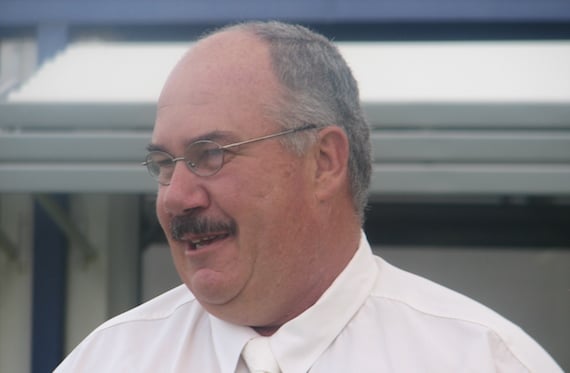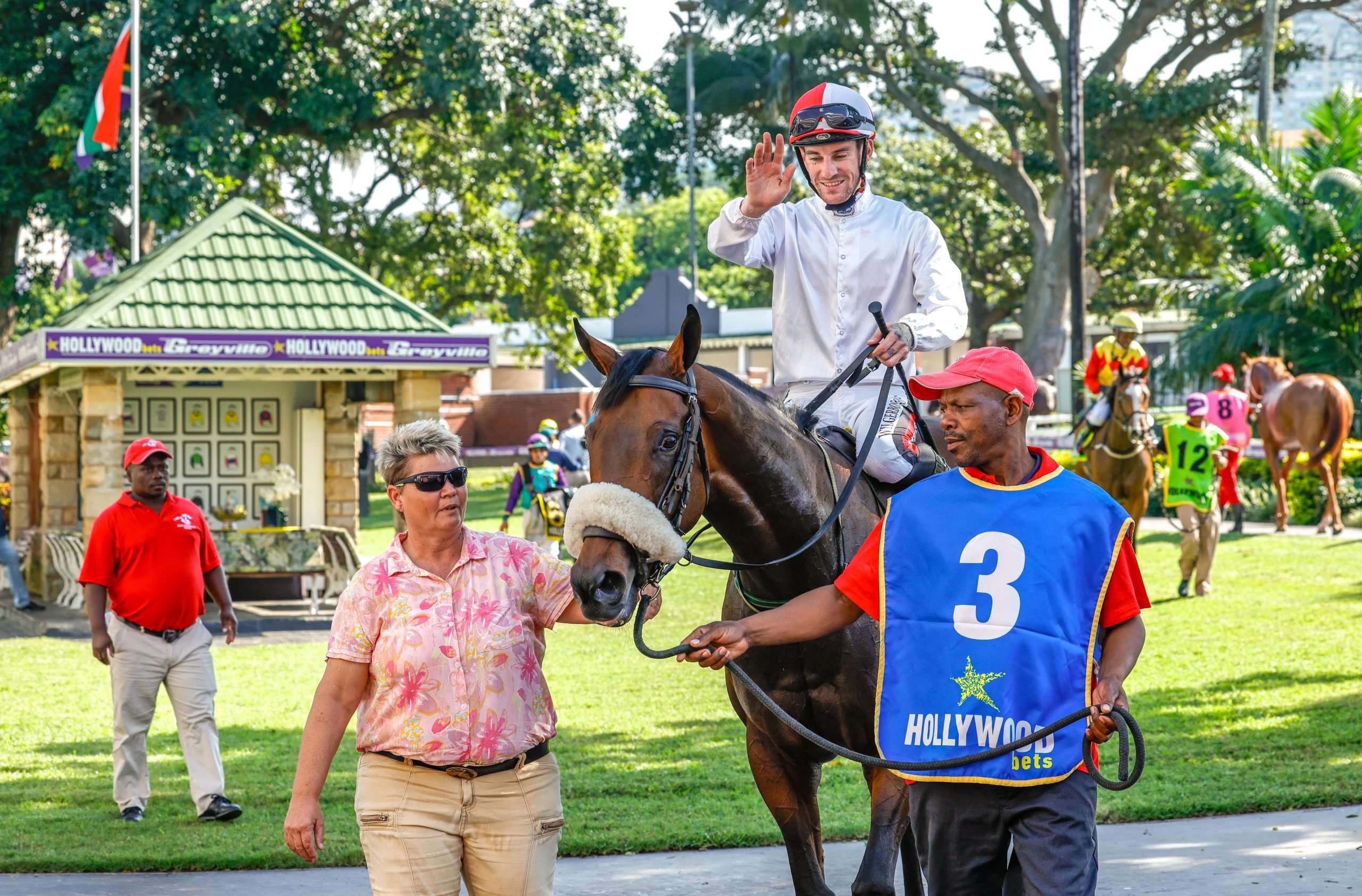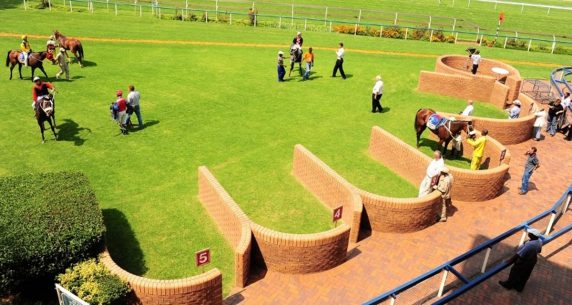In the famous Hollywood film, Any Given Sunday, Al Pacino gave his famous pep talk that life is a game of inches. “The margin for error is so small – I mean one-half a step too late, or too early, and you don’t quite make it. One-half second too slow, too fast, you don’t quite catch it. The inches we need are everywhere around us.” In horse racing, I’d venture that it’s game of centimetres and sometimes even millimetres – judging by some of those photo finish calls.
With thousands if not millions of rands between the winner and the also rans, every single competitive advantage can make a difference – no matter how small – which makes it doubly surprising how much (or rather how little) real scientific research is done into improving performance in the race horse – by and large we still rely on traditional methods of, well, just about everything. However, given the ever decreasing time limits and the ever increasing money at stake, perhaps it is understandable – racing is about results, rather than academic advancement. But sometimes it can be both.
I became interested in equine physiology in a roundabout way. Originally interested in the field of horse behaviour, my interest waned when I realised that most ‘horse problems’ were usually just equine manifestations of ‘people problems’. And so my interest moved from equine remedial behaviour to equine physical remedial therapies, which landed me at Mary Bromiley’s Downs House Equine centre studying Equine Sports Therapy. One of my favourite text books was Dr David Marlin’s excellent work, ‘Equine Exercise Physiology’ and I was thrilled to have the opportunity to interview Dr Marlin a few months ago.
While it seems rather obvious, pain and discomfort can radically affect performance – in humans as well as horses – and among the many aspects we covered, I was interested that poor saddle fit rated high on Dr Marlin’s list of factors that compromise performance. Although research is still fairly limited, due to their design, most saddles and girths do create a number of pressure points on horses, which can result in sore backs, horses being ‘girthy’ when saddled up or in extreme cases, even compromising their stride and movement and if not addressed, problems become compounded over time. Common pressure areas are the withers as well as the lower rib area, as well as anywhere there are metal buckle attachments.
Logistical challenge
Thoroughbreds are trained and raced fairly young and at a time when their bodies are still developing, meaning that their shape is constantly changing as they grow. However, the logististics of fitting specific saddles to specific horses are prohibitive, so most opt for a basic generic saddle and ‘make do’ with padding. While jockeys may opt for individual saddles on race day, due to necessity, most training yards opt for a ‘one size fits all’ approach.
Someone who wasn’t satisfied with the status quo is Cape trainer, Eric Sands. Eric has something of a reputation for modifying and improving things, with his innovative stable rug design among my favourites, but a visit to his office will often find prototypes for various projects as works in progress with Eric pondering how to finesse the design one way or another.
An idea is born
A few years ago, Eric found that he was unhappy with the kit some of the jockeys were using on his horses on race day. “In this country, the jockey supplies the raceday kit and I was finding that some of my horses came back with sore withers, skin diseases and so on. I thought I can’t just moan about it, so I decided to try and design my own.” After a lot of experimenting with different materials, designs and thicknesses, he came up with the prototype of what is now the Amahashe saddle pad. “Initially it was for my own use, but in 2013 I was visiting Mike de Kock in Dubai and we were discussing girth tensions. I offered him some of my pads and after trying them out, he ordered some, as did Christophe Soumillon. So it’s really thanks to them that I started Amahashe.”
After sending a few to Doug Whyte in Hong Kong and Jeff Lloyd in Australia, orders started trickling in and Eric has had to take on additional people to help him keep up with demand.
How they work
The pads are made from EPDM, a durable, high density, closed cell synthetic rubber with holes punched at intervals across the material. Eric cut and glued the original pads by hand, but as the design has been refined and perfected, pads are now machine cut, but are still hand glued and every pad is personally inspected by Eric before being dispatched.
The pads are anatomically shaped to fit a horse’s withers and are available in two different densities. They also come in a variety of sizes, including dock, small, medium and large as well as a variety of weights and sit comfortably and unobtrusively underneath race day number cloths. “The pads are thin and lightweight. People often make the mistake of using a lot of padding, but instead of reducing pressure, this can result in a sandwich effect and end up pinching the wither, “ explains Eric. “The pads are non slip and move with the horse’s skin, which reduces girth tension and helps counteract the dead weight effect. The pads are antibacterial and anti fungal, which helps reduce the risk of spreading skin infections. They do not absorb water, so they are easy to clean and if needed for consecutive horses on race days, can be rinsed and simply dabbed dry and if they are cared for properly, they are extremely durable.” He shows me a sample that he has been testing on his training string and even after several months of work, it looks brand new. These new exercise saddled pads will be ready for dispatch shortly.
“The non-absorbent properties mean they do not soak up sweat and change weight – an important factor for jockeys when it comes to facing the scale and we do now have various sizes and weights to suit. The high density of the material has deflection and compression properties which acts to absorb and dissipate shock and helps distribute pressure.”
In refining and testing his pads, Eric has made a number of interesting discoveries. “The material we use is a bad conductor of heat, so although the surface of the pad where it touches the horse’s skin will rise in temperature to match the horse’s, the rest of the pad does not increase in temperature which one often finds with other synthetic materials.” A number of tests using thermography have shown that the Amahashe pads assist horses in thermoregulating more efficiently and make a considerable difference to their post exercise recovery rates. “This isn’t me being clever!” he laughs, “It’s just things we’ve discovered along the way.”
The science bit
The reason lies in the clever material as well as the clever design. A horse’s ability to convert stored energy into mechanical energy is relatively inefficient. Approximately 80% of the energy is given off as heat and at exercise, a racehorse can produce enough heat to raise their body temperature significantly. This needs to be dissipated somehow.
Some heat is stored, raising the core temperature, some is dissipated via respiratory heat loss, but at least two thirds of the metabolic heat load is dissipated via the skin. The cardiovascular system transfers heat from where it is generated (the muscles) to areas where the heat can be dissipated – mainly the skin – and during exercise, blood flow to the skin increases in order for evaporation of sweat to take place.
Compared to humans, horses have a relatively small surface area from which to dissipate heat and it follows that a lot of blood is directed away from the muscles and internal organs to the skin to help regulate the temperature. This results in a reduction in essential blood flow to muscles, which can lead to premature muscle fatigue. Eric explains, “The pads don’t stop blood flow to the skin, but they cover less surface area and allow better natural evaporation.”
Interestingly, thermographic testing shows that Eric’s pads help spread the blood flow more evenly, helping recover normal temperature more quickly and efficiently. This means blood flow can be returned to muscles and vital organs more quickly, aiding faster recovery and fewer post exercise complications. Efficiency in reducing temperature is not limited to the locomotor muscle and vital organs. Horses’ lower-leg tendons also heat up significantly during exercise and thermography tests show a marked decrease in the temperature of the leg tendons and ligaments too.
Although Eric is not comfortable with self promotion, his client list speaks volumes, including the majority of our local jockey ranks (canny race goers may have spotted one of Eric’s pads under Anton Marcus’ saddle cloth during current Horse of the Year, Legal Eagle’s 2016 campaign). In Australia they are favoured by the likes of Jeff Lloyd and William Pike and in Hong Kong, where the Club supplies the majority of the race day kit and any personal preferences are supplied by the jockeys themselves, Amahashe is the pad of choice for Doug Whyte, Karis Teetan and Joao Moreira amongst others. Eric’s pads have been seen winning races in Hong Kong, Singapore, Malaysia, NZ, Australian, Mauritius, Zimbabwe, Kenya, UK, Ireland, France, Germany and many more.
Proudly South African
While it has been a few years in the making, Amahashe is a proudly South African product. All the materials are sourced locally and provide local employment opportunities. After relying on word of mouth since he first started out in earnest, there is now a website, Facebook and Twitter feed and Eric is off to the Al Fares International Equine Trade Show in Dubai this week. Although his main focus is the racing industry, Eric has also branched out into other areas, including show-jumping, endurance and polo, with great success. The pads have other uses as well, being useful tools for saddle fit as the memory foam material holds imprints of pressure areas (or lack thereof) to show where saddles may not be fitting correctly or where buckles or girth attachments may be causing pressure. Because the pads were designed to help horses, it is appropriate that the name Amahashe means ‘horses’ in Zulu and Xhosa. Happier, more comfortable horses, mean better performance. Faster recovery rates mean less stress on the system, which translates into those all important inches where they matter most.



